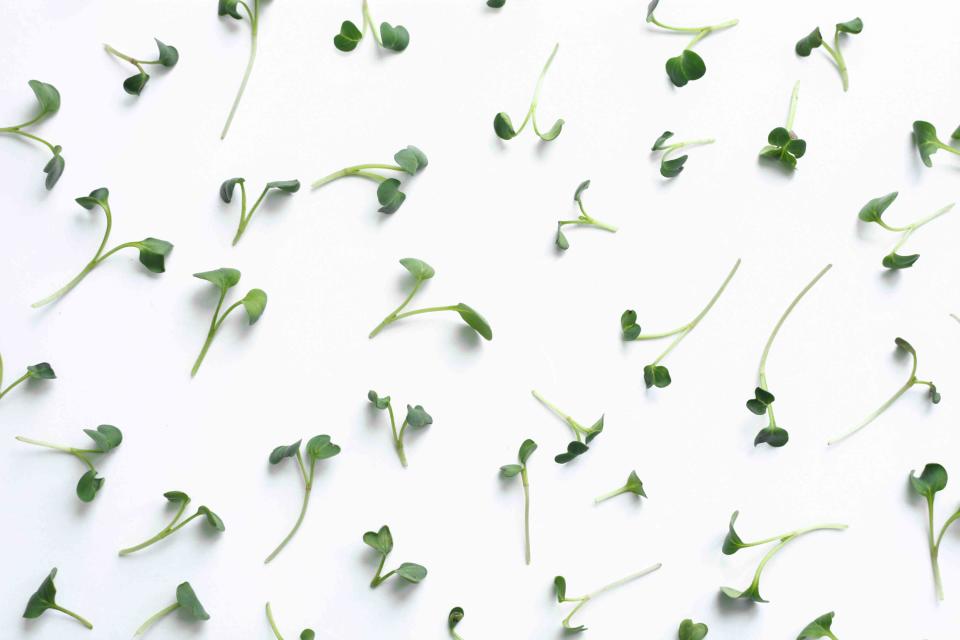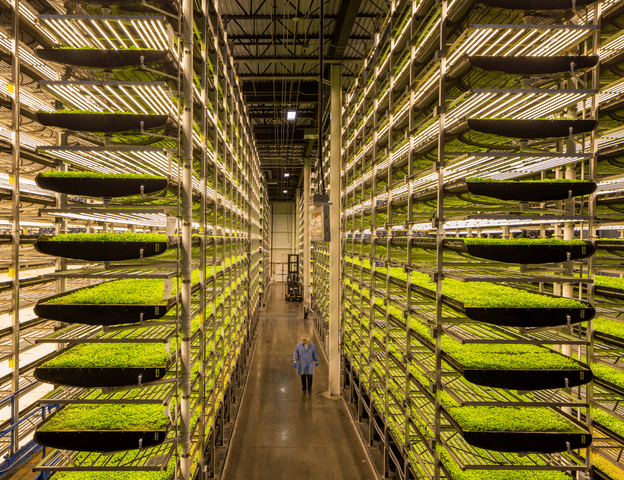7 Creative Ways to Add Nutrient-Packed Microgreens to Your Daily Meals
Plus, Everything You Need to Know About These Nutritious Greens

Getty Images / Anna Blazhuk
Medically reviewed by Barbie Cervoni MS, RD, CDCES, CDN
Microgreens—those tiny, nutrient-packed seedlings of vegetables and herbs—are no longer just a garnish. They are gaining popularity globally as a nutritious addition to meals and for a good reason. They're packed with nutrients and have tons of health benefits.
You may have dismissed them as a pretty addition on top of your eggs or avocado toast, or written them off as a nice-to-have instead of a cart must-have. Here’s why you should add microgreens to your grocery rotation stat.
What are Microgreens?
Microgreens are herb or vegetable seedlings that are harvested at an early stage of growth, generally within two weeks after germination. They are larger in size than sprouts and smaller than baby greens.
According to Marc Oshima, co-founder and CMO of AeroFarms, the largest microgreens provider in the United States, "Microgreens are up to five times more nutrient dense than their mature counterpart. And they are better for the environment, requiring 95% less water and 99% less land than field farming."
Microgreens are typically grown in soil or a soil substitute—others are grown in hydroponic environments. They come in a variety of flavors, textures, and colors and include microgreens from arugula, broccoli, sunflowers, radish, kale, and more.

AeroFarms
Health Benefits of Microgreens
Like other plants, microgreens are rich in nutrients and have a wide array of health benefits. Here are some of ways you might benefit from incorporating microgreens into your diet.
Rich in Nutrients to Support Optimal Health
Microgreens are chock full of vitamins, minerals, and antioxidants. One study found that microgreens of red cabbage and cilantro have higher concentrations of nutrients than their regular mature counterparts. These greens are small but mighty!
Helps to Fight Inflammation
Microgreens contain powerful antioxidants that have anti-inflammatory properties. A study in The Journal of Medicinal Food found that radish and broccoli microgreens had powerful anti-inflammatory effects.
Related:7-Day Anti-Inflammatory Meal Plan: Recipes & Prep
Protects Against Cancer and Heart Disease
Sulforaphane, a sulfur-rich phytochemical found in cruciferous vegetables, protects against cancer and supports heart health. Some evidence suggests that broccoli sprouts have 10 to 100 times higher levels of sulforaphane than the mature broccoli plant.
High in Immune-Boosting Vitamin C
Ascorbic acid, also known as vitamin C, is an essential phytochemical known to boost immunity through its antioxidant capabilities. Research suggests that the levels of ascorbic acid are higher in the microgreen stage versus sprouts, baby greens, and mature plants.
Regardless of the various health benefits, microgreens are a flavorful, convenient way to boost the nutrient density of your diet. You'll get a lot of bang for your buck and create unique flavor profiles for your go-to dishes.
With sprouts, you are eating the root of the plant. Microgreens are the leaf and stem. Microgreens are grown in soil or hydroponic conditions, whereas sprouts typically germinate in water. Microgreens require light to grow, whereas sprouts do not. Microgreens also are typically more nutrient dense than sprouts.
7 Ways to Incorporate Microgreens Into Your Diet

AeroFarms
There are so many ways to use microgreens to enhance your nutrition and your cooking. Here are the seven top ways we recommend using them.
Level up your takeout: Push your takeout to the next level by adding some microgreens on top. Whether you're getting a premade salad, a pizza, or a chicken dish, microgreens work well with many different takeout dishes—even sushi!
Dress up your sandwich or salad: Transform your go-to sandwich or salad from ordinary to extraordinary with a sprinkle of microgreens. A great sandwich combo includes whole grain bread, 1/4 mashed avocado, 1 teaspoon honey mustard, 2 slices tomato, 1/2 thinly sliced cucumber, 2 ounces sliced turkey, and a handful of microgreens. Add some spice to your favorite salad with spicy collard green and arugula microgreens.
Boost your soup: Microgreens are a great way to boost the flavor and nutrition of your favorite soups. A handful of microgreens can add a spicy flavor comparable to hot sauce, without the extra sodium.
Garnish your fish: Microgreens add great texture and flavor to your favorite fish dish. If you're a fan of grilled swordfish, swap tartar sauce for fresh salsa and microgreens to improve nutrition and reduce dietary fat content.
Whip up microgreen pesto, vinaigrette, or hummus: Throw microgreens into your high-speed blender to whip up a highly nutritious pesto, vinaigrette, or hummus. Combine arugula microgreens, lemon juice, olive oil, parmesan cheese, and toasted pine nuts for a crave-worthy pesto.
Top your bagel or avocado toast: Microgreens can elevate regular whole wheat cream cheese bagels and complement your lox and schmear. If you're a fan of avocado toast, try adding microgreens to boost the nutrition and flavor. The healthy fat in avocado will boost the absorption of the fat-soluble vitamins A and C that are found in microgreens.
Create a slaw for tacos: Swap cabbage slaw for microgreens in your fish tacos to create a different flavor profile, vary the texture, and add nutrition.
The Bottom Line
Microgreens are available at most local grocery stores, online grocery retailers, and farmer's markets. The variety you choose will influence the taste and spiciness of the green. For example, micro kale, broccoli, and bok choy have a more mellow flavor compared with wasabi greens, mustard greens, and arugula, which tend to be spicy.
Experiment with how you use microgreens, as they're easy to incorporate into your daily routine. Simply add them to your favorite smoothie or garnish a slice of takeout pizza with a handful of the nutritious greens.
Read Next:8 Creative Ways to Eat Avocado

